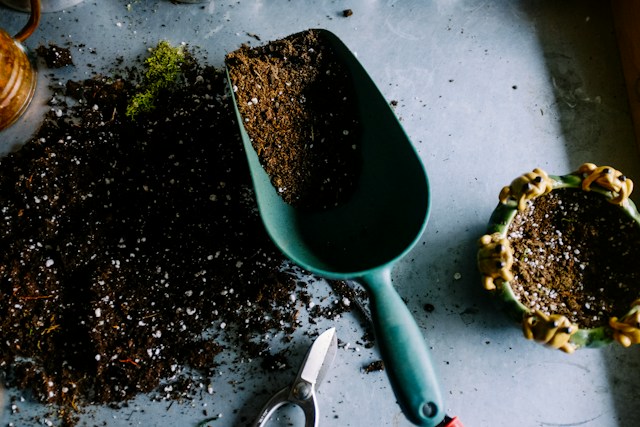Many studies seem to show that gardening offers health benefits for seniors. From additional physical activity to reduced stress, it’s worth it to get outside and grow. However, you need to plan before picking out what you want to grow – varying gardening zones across the United States offer support for differing plants.
Related: Mindfulness for Wellbeing (for Seniors)
Are Certain States Too Cold to Garden?
If you live in a colder area such as Colorado or Minnesota, you may think that you aren’t able to garden. This couldn’t be further from the truth! No matter where you live or how cold it gets during the winter, there are plants that can grow in your state.
Of course, you’ll need to take the time to learn about which plants can survive your climate, as well as ensure you plant them during the right time of year. Below, we dive into all the garden zones based on the lowest temperatures for your area.
If you aren’t happy with your current climate and want to consider moving prior to retirement, be sure to check out our article titled The Best (and Worst) States for Retirees.

Plant Growing Zones by Temperature
There are ten zones in the United States for plant hardiness, which means people in varying spots across the U.S. will have ease raising different crops. Your locations will impact what you can develop, especially in areas where it drops far below freezing. Keep reading to learn what you should grow depending on your gardening zone.
Zone 1: -60°F to -50°F
Zone 1 splits into 1a and 1b. The temperature in 1a ranges from -60 to -55 Fahrenheit at the coldest, and 1b hits -55 to -50 at the coldest. Zone 1 is in areas of Alaska and no other state.
The best plants to grow in Zone 1 include the following:
- Wild Mint
- Sheep Sorrel
- Crowberry
- Goldenrod
- Labrador Tea
These will thrive in the colder temperatures. This area is the coldest of the growing zones in the USA, but that doesn’t mean nothing will thrive. It’s rare to be able to plant items that will live when the temperature drops this far, but these are winners if you want something to survive in a freezing climate.
Zone 2: -50°F to -35°F
Next on the hardiness zone map for plants is Zone 2. Zone 2a ranges from -50 to -45 Fahrenheit at the coldest, and 2b ranges from -40 to -35. Zone 2 hits the northeastern plains of Colorado, parts of the Rockies, and portions of Nevada, New Mexico, Montana, Wyoming, and Idaho. Alaska also has parts in Zone 2.
Ideal plants for growing in Zone 2 include the following:
- Serviceberry
- Nanking Cherry
- Juniper
- Lady’s Slipper Orchid
These are just a few plants that will live in Zone 2. Zone 2 is slightly warmer than Zone 1, but not by too much. These plants are durable and will grow if you’re careful with the construction of your garden. It will be challenging to grow, and it’s critical to stay warm while gardening, or you risk hypothermia. However, the conditions will be worth it if you’re determined.
Zone 3: -40°F to -30°F
Zone 3 starts to warm things up a bit. Temperatures in Zone 3a range from -40 to -35 degrees Fahrenheit and -35 to -30 degrees in Zone 3b. This section typically covers the northern areas of Minnesota, Wisconsin, Montana, North Dakota, Maine, New York, and Wyoming.
Excellent plant choices for Zone 3 include these:
- Juniper
- Red Maple
- Bleeding Heart
- Marigold
These plants thrive in Zone 3. Zone 3 is the coldest part of the core portion of the United States. These plants are durable and will thrive in this climate if they are planted at the right time of the year.

Zone 4: -30°F to -20°F
Zone 4 moves down the United States of America. The temperature in this area ranges from -30 to -25 degrees Fahrenheit in Zone 4a and -25 to -20 degrees in Zone 4b. States with this title include portions of Maine, Montana, Wyoming, North Dakota, South Dakota, Wisconsin, Minnesota, and some of the northern areas of New York, New Hampshire, and Vermont.
Plants that will thrive include the following:
- Black Chokeberry
- Red Maple
- Coneflower
- Bottlebrush Buckeye
- Sunflower
These will grow well in Zone 4 with careful planting and care. Native plants are easy to grow here, which is still freezing but warmer than in some areas of the country. Of course, you’ll need to use specific techniques to beat the cool parts of the year.
Zone 5 : -20°F to -10°F
Zone 5 creeps even closer to the 0-degree mark. Zone 5a ranges from -20 to -15 degrees Fahrenheit, while Zone 5b goes from -15 to -10 degrees Fahrenheit. It includes parts of the Northern Central U.S., such as Wisconsin, Iowa, Minnesota, and Nebraska. Even portions of Nevada and California fall into this section.
You’ll need cold-hardy plants, such as the following:
- Russian Sage
- Butterfly Bush
- Pink Oak
- Peony
- Verbena
We start to get more variety in Zone 5. There are options in the tree, perennial, and annual categories for Zone 5. The growing season is medium in length, so there is a decent amount of time to ensure everything goes in the ground before the coldest parts of the year hit.
Zone 6: -10°F to 0°F
Zone 6 rises a little higher in temperature. For Zone 6a, gardeners will find a low-temperature point of -10 to -5 degrees Fahrenheit. In Zone 6b, gardeners will locate a range from -5 to 0 degrees. Many states are included here, such as parts of Alaska, California, Colorado, Oklahoma, and more.
Thriving plants include the following in Zone 6:
- Rose of Sharon
- Boxwood
- Petunia
- Geranium
- Yarrow
These are the best selections for this temperature. Zone 6 is home to slightly more unpredictable weather patterns, so it’s vital to know what you’re doing if you garden here. It offers a medium-growing time frame for a comfortable season for plant enthusiasts.
Zone 7: 0°F to 10°F
Zone 7 finally breaks the negative-degree barrier. The 7a Zone ranges from 0 to 5 degrees Fahrenheit, and Zone 7b goes from 5 to 10 degrees. It includes states like Alabama, Alaska, Delaware, Oregon, Pennsylvania, South Carolina, Tennessee, Missouri, Utah, and Washington.
Winning plants for Zone 7 include the following:
- Bee Balm
- Southern Magnolia
- Snapdragon
- Yoshino Cherry
Zone 7 offers the best format for these plants to grow. This section is one of the first areas where growing citrus fruits becomes more of a possibility. Although it will take a little more effort, many cold-hardy citruses will survive in Zone 7.
Zone 8: 10°F to 20°F
Zone 8 is a little warmer than Zone 7. The temperature shifts from 10 to 15 degrees Fahrenheit in Zone 7a and 15 to 20 degrees in Zone 7b. States in Zone 8 include North Carolina, South Carolina, Georgia, Florida, Louisiana, Texas, Arizona, and more.
Popular fauna to grow in Zone 8 include the following:
The climate of Zone 8 is incredible for these plants. Zone 8 is in the back half of the zone, which makes it one of the warmest states for plant hardiness. Most of the southern part of the country fits into this area, where many seniors live.

Zone 9: 20°F to 30°F
Zone 9 is one of the most popular climates to live in. Zone 9a provides a temperature range of 20 to 25 degrees Fahrenheit at the coldest and 25 to 30 in Zone 9b. This section includes parts of Hawaii, Oregon, Washington, Florida, Georgia, Texas, South Carolina, Louisiana, Alabama, Nevada, New Mexico, Mississippi, and Utah.
Thriving plants for this section include the following:
- Daylily
- Mexican Sage
- Crape Myrtle
- Madagascar Periwinkle
These thrive in this wonderful climate. Zone 9 is warm and offers a mild temperature. Gardeners will find that it rarely falls below freezing, which reduces the possibility of sudden death of plants. There are long summers for a fantastic growing experience for gardeners.
Zone 10: 30°F to 40°F
Zone 10 is the one of the warmest of the zones. Zone 10a ranges from 30-35 degrees Fahrenheit at the coolest, and Zone 10b ranges from 35-40 degrees. This section encompasses southern Florida, portions of Hawaii, parts of the California coast, and a part of southern Arizona.
Plants that will grow well in Zone 10 include the following:
- Sunflower
- Strawberry Tree
- Bird of Paradise
- Wax Begonia
These will thrive in the warmer climates of these states. Many seniors choose to live in Zone 10 areas of the United States. They’re warm, comfortable, and great places to grow plants that don’t need too much water.
Zone 11: 40°F to 50°F
Zone 11 is diving into the warmest areas of the country. The temperature range for this area ranges from 40 to 45 degrees Fahrenheit for Zone 11a and 45 to 50 degrees for Zone 11b. This hardiness zone includes most of the Big Island in Hawaii and the Florida Keys.
Plants that will live in Zone 11 include the following:
- Coconut Palm
- Ti Plant
- Cosmos
- Gumbo Limbo
Tropical-leaning plants love Zone 11, which is why the Florida Keys are an incredible place for flora like the Coconut Palm to grow. Winter temperatures typically stay above freezing, so you never have to worry about these plants falling victim to a sudden freeze.
Zone 12: 50°F to 60°F
Zone 12 is nearly the hottest in the country. Temperatures for this area range from 50 to 55 degrees Fahrenheit in Zone 12a and 55 to 60 degrees in Zone 12b. This location includes portions of Hawaii and Puerto Rico.
Here are some plants that will grow in Zone 12:
- Orchids
- Elephant Ears
- Avocado
- Papaya
- Weeping Fig
These are just a few plants that will succeed in Zone 12. Zone 12 can be very warm, which is why you’ll only find it in Hawaii and Puerto Rico. The tropical climate benefits the growth of these plants tremendously – and the climate makes for a comfortable place to retire.

Zone 13: 60°F to 70°F
The hottest section, Zone 13, is the rarest and most uncomfortable. The lowest temperature in Zone 13a ranges from 60 to 65 degrees Fahrenheit, and Zone 13b ranges from 65 to 70 degrees. You’ll find this portion in Puerto Rico and the outer edges of Hawaii.
Plants that will grow well in Zone 13 include the following:
- Palm Trees
- Crotons
- Bird of Paradise
- Bamboo
- Mango
- Banana
- Orchids
These plants adore the warmer weather. In Zone 13, you’ll have the most luck with plants that love warm, humid environments. They’re the tropical dream and won’t take too much effort to grow with the natural inclinations of the environment.
Final Thoughts
Zones 1-10 offer dramatically different temperature ranges, from far below freezing at the coldest to a comfortable walking temperature. Gardening provides physical and mental benefits, according to several studies, so it’s worth it if you care about your health and want the satisfaction of growing something yourself.
We hope this information was helpful! Gardening is a beneficial activity for seniors, whether you live in the tropics of Florida or the coldest region of Alaska. Anyone can garden, but it’s crucial to select plants that will survive in your area of the country.
You May Also Enjoy: How to Learn About Gardening (Beginner’s Guide)


















